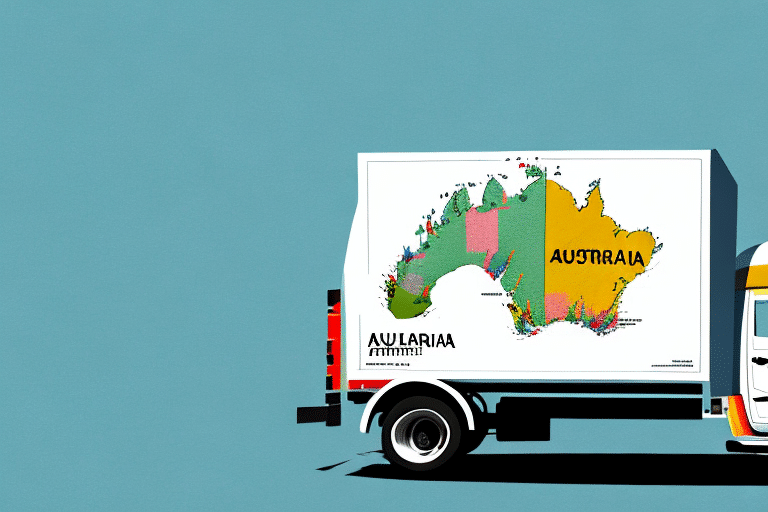Discover the Best Ecommerce Shipping Solutions in Australia
Running a successful ecommerce business requires careful attention to many different factors, and one of the most important is shipping. Choosing the right shipping solution can make a significant difference in your ability to attract and retain customers, manage costs, and grow your business. In this article, we'll explore the different ecommerce shipping solutions available in Australia and provide guidance to help you choose the best one for your business needs.
The Importance of Choosing the Right Shipping Solution for Your Ecommerce Business
When it comes to ecommerce, shipping can be a significant competitive advantage or disadvantage. According to a Statista report, almost three-quarters of customers are more likely to purchase from a store that offers free shipping, and 93% consider shipping speed a critical factor in their purchasing decision. By offering quick and affordable shipping, you can differentiate your business from competitors, win customer loyalty, and increase sales.
Factors to Consider When Choosing an Ecommerce Shipping Solution in Australia
There are several key factors to consider when choosing an ecommerce shipping solution in Australia. Below, we'll outline some of the primary considerations that you should keep in mind to make an informed decision:
Product Size and Weight
The size and weight of your products will significantly impact your shipping rates and the shipping solutions available to you. If you sell large or heavy items, you may need to work with a specialized carrier or shipping partner. Conversely, if your products are small and lightweight, you might take advantage of flat-rate shipping options or use a standard carrier like Australia Post.
Shipping Speed
Depending on your customers' needs, you may need to offer different shipping options with varying levels of speed. For perishable or time-sensitive items, offering same-day or overnight shipping options can be crucial. If your products aren't as time-sensitive, you might opt for more affordable shipping that takes several days or even a week to arrive.
Shipping Destination
Where you ship your products is another essential consideration when selecting a shipping solution. If the majority of your customers are located within Australia, partnering with a domestic carrier like Australia Post is beneficial. However, if you sell internationally, you'll need to collaborate with an international shipping partner that can handle customs requirements, shipping regulations, and other considerations.
Cost
Cost is a critical factor when choosing an ecommerce shipping solution. You'll need to balance shipping costs with the value of your products and your customers' expectations to find a solution that works for your business.
Comparison of Top Ecommerce Shipping Solutions Available in Australia
Now that we've outlined some key considerations for choosing an ecommerce shipping solution, let's take a closer look at some of the top options available in Australia:
Australia Post
Australia Post is one of the most popular shipping solutions for ecommerce businesses in Australia. They offer a variety of domestic and international shipping options, including express shipping and flat-rate options for small items. Australia Post also has a feature-rich online platform that allows you to print shipping labels, track shipments, and more. However, their rates can be higher than some other options, and their service can be unreliable in certain areas.
Sendle
Sendle is a relatively new player in the ecommerce shipping space but has quickly gained popularity thanks to their low rates and focus on sustainability. Sendle offers carbon-neutral shipping, and their rates are often significantly lower than Australia Post's. However, they don't offer the same range of services, and their coverage area is currently limited to Australia, the United States, and the United Kingdom.
DHL eCommerce
DHL eCommerce is a popular choice for businesses that ship internationally. They offer a variety of solutions to meet a range of needs, from affordable standard shipping to express options that provide full tracking and fast delivery. However, their rates can be higher than other solutions, and they don't offer many budget-friendly options for small businesses or those shipping within Australia.
eBay Managed Delivery
eBay Managed Delivery is a relatively new option specifically designed for eBay sellers. It's a full-service solution that handles all aspects of shipping, including picking, packing, and delivery. While eBay Managed Delivery can be more expensive than other options for some sellers, it offers convenience and reliability for those already selling on eBay.
How to Determine Which Ecommerce Shipping Solution is Best for Your Business Needs
Choosing the right ecommerce shipping solution can be challenging, but it's worth investing the time and effort to make an informed decision. To find the best option for your business, consider the factors we've outlined above and narrow down your choices based on your specific needs and priorities. You may also want to trial a few different solutions to determine which one works best for you.
Pros and Cons of Using Third-Party Shipping Solutions vs In-House Shipping for Your Ecommerce Business
When it comes to shipping, ecommerce businesses generally have two main options: working with a third-party shipping provider or handling shipping in-house. Here are some of the pros and cons of each option:
Third-Party Shipping Solutions
- Pros:
- Easier to scale up or down without investing in additional equipment or services.
- Access to expertise and resources for managing shipping effectively.
- Opportunity to leverage volume discounts and negotiate better rates.
- Cons:
- Less control over the shipping process and customer experience.
- May be more expensive than in-house solutions for some businesses or order volumes.
In-House Shipping
- Pros:
- Greater control over the shipping process and ability to provide a customized experience.
- Potentially lower costs for some businesses or order volumes.
- Cons:
- Requires investment in equipment, space, and personnel.
- May be less efficient and scalable than third-party solutions.
- May need to navigate complex regulations and carrier relationships.
How to Negotiate Better Rates with Ecommerce Shipping Providers in Australia
If you've selected a third-party shipping solution for your ecommerce business, you may be able to negotiate better rates by following these tips:
- Bundle Your Shipping Volume: If you have multiple packages going to the same location, consider bundling them together to qualify for a volume discount.
- Explore Alternative Shipping Options: Ask your provider about less expensive or more efficient shipping options that may fit your needs.
- Monitor Your Shipping Habits: Keep track of your shipping costs and volume regularly to identify areas where you may be able to save money.
- Consider a Long-Term Agreement: If you're confident in your shipping volume and needs, you may be able to negotiate a discounted rate by signing a long-term agreement with your provider.
The Role of Technology in Streamlining Your Ecommerce Shipping Processes
Advancements in technology have made it easier than ever to manage ecommerce shipping efficiently. Here are a few ways that technology can help streamline your shipping processes:
- Automated Labels and Shipping Documents: Use software tools to generate shipping labels, packing slips, and other documents automatically.
- Integrated Shipping Management: Connect your online store to your shipping provider's system to automate order handling, package tracking, and more.
- Data Analysis and Reporting: Utilize data analytics tools to track shipping costs, identify areas for improvement, and monitor carrier performance.
Tips for Improving Your Ecommerce Shipping Efficiency and Customer Experience
To elevate your ecommerce shipping, consider implementing the following tips:
- Offer Free Shipping: Provide free shipping at a minimum order value to encourage larger purchases and offset shipping costs.
- Provide Accurate Shipping Estimates: Offer precise shipping estimates and tracking information to improve customer satisfaction and reduce support inquiries.
- Use Branded Packaging: Incorporate branded packaging and personalized messaging to create a memorable and engaging unboxing experience for customers.
Common Mistakes to Avoid When Selecting an Ecommerce Shipping Solution in Australia
When choosing an ecommerce shipping solution, it's crucial to avoid these common mistakes:
- Assuming One Size Fits All: Evaluate different shipping options carefully based on your specific needs and priorities.
- Overlooking Packaging Importance: Choose packaging that's appropriate for your products and effectively protects them during transit.
- Ignoring Customer Service: Ensure your shipping provider offers reliable support and communication to avoid frustrating your customers.
The Future of Ecommerce Shipping: Trends and Predictions for the Australian Market
As ecommerce continues to grow in Australia, several trends and predictions are shaping the future of shipping. Some of the most significant trends in ecommerce shipping include:
- Increased Reliance on Automation and Technology: Automation tools and advanced technologies are streamlining shipping processes, reducing errors, and enhancing efficiency.
- Greater Emphasis on Sustainability: Eco-friendly shipping options and sustainable packaging are becoming increasingly important to consumers and businesses alike.
- Innovative Shipping Models: New shipping models, such as crowdsourced delivery and drone deliveries, are emerging to meet the demands of fast and flexible shipping.
How to Implement a Successful Cross-Border Ecommerce Shipping Strategy in Australia
Cross-border ecommerce can be an effective way to expand your customer base and increase sales, but it requires additional considerations. Here are a few tips for implementing a successful cross-border ecommerce shipping strategy in Australia:
- Research Customs Requirements: Understand the customs requirements and potential tariffs for your products in the countries you’re shipping to.
- Partner with an International Shipping Provider: Collaborate with a shipping provider experienced in cross-border shipping to navigate complexities effectively.
- Offer Localized Payment and Shipping Options: Provide localized payment and shipping options to enhance the shopping experience for international customers.
- Be Transparent About Costs: Clearly communicate shipping costs, duties, and estimated delivery times to avoid surprises or frustration for customers.
Conclusion
Choosing the right ecommerce shipping solution is crucial for achieving success in the Australian market. By considering factors like product size and weight, shipping speed, and cost, you can select a shipping provider that meets your needs and fits your budget. To optimize your shipping processes, leverage technology, negotiate better rates, and implement customer-focused strategies. With the right shipping solution in place, you'll be well-positioned to grow your ecommerce business and delight your customers with fast, reliable, and affordable shipping.






















